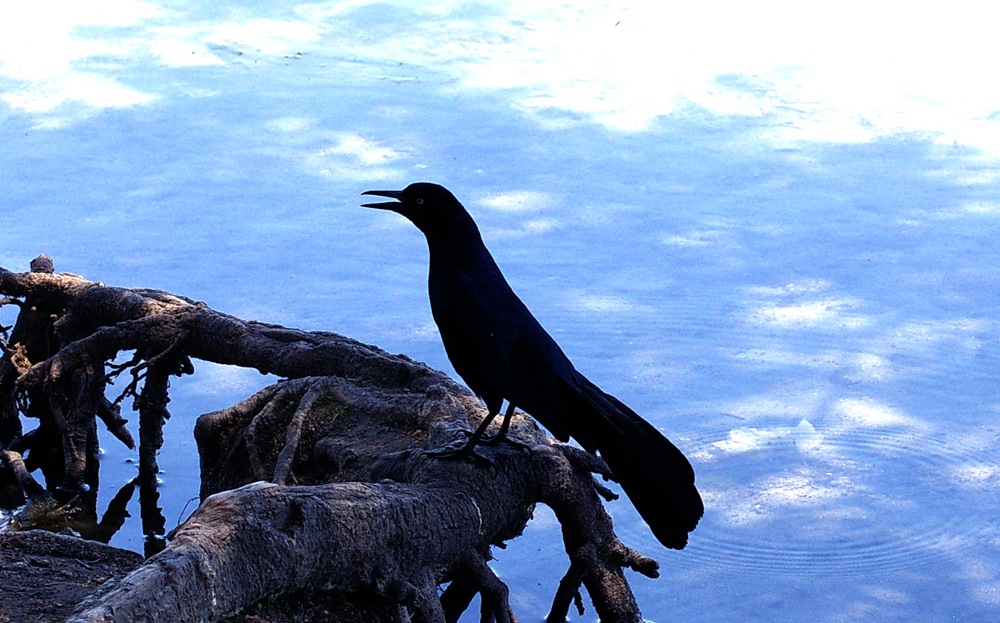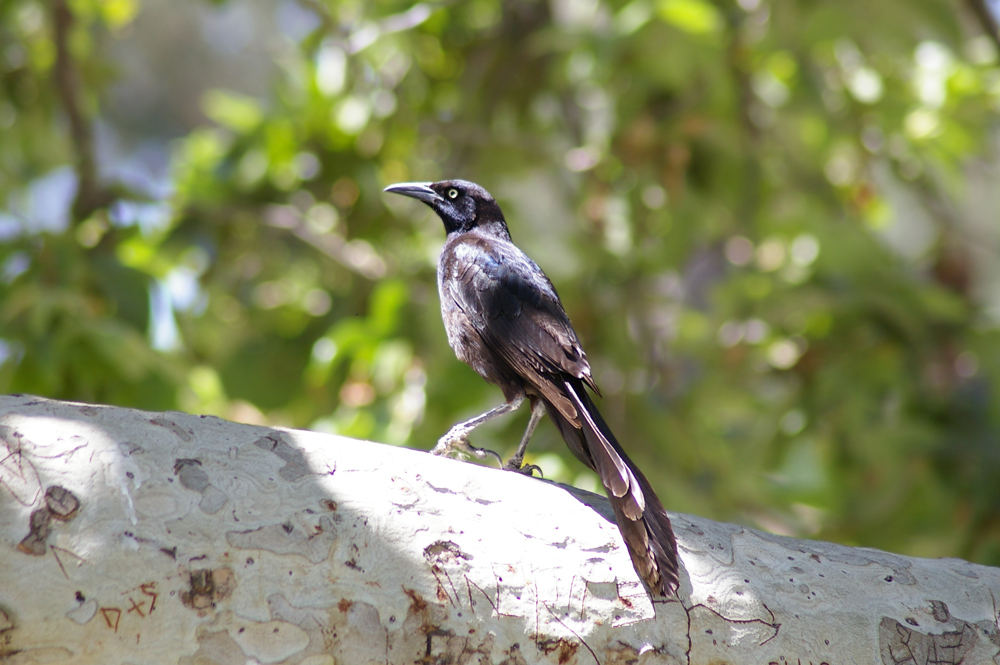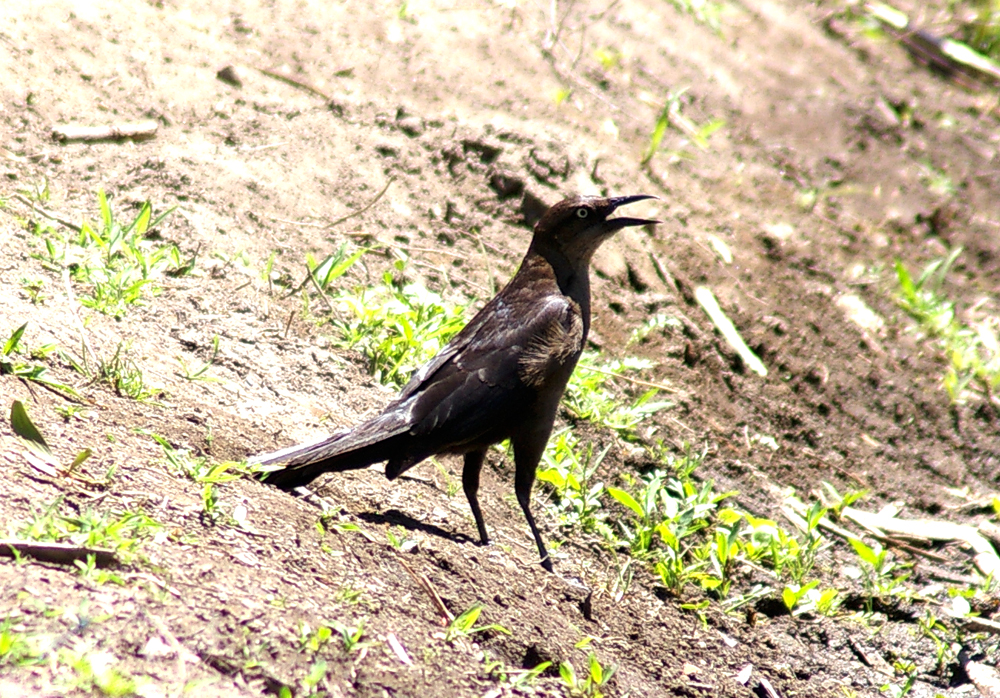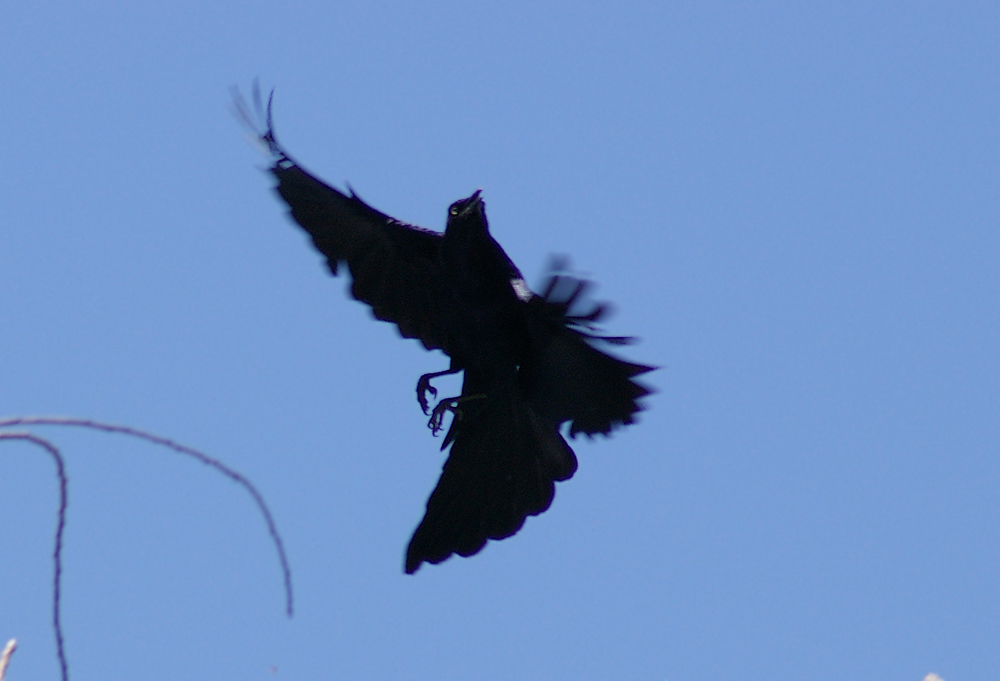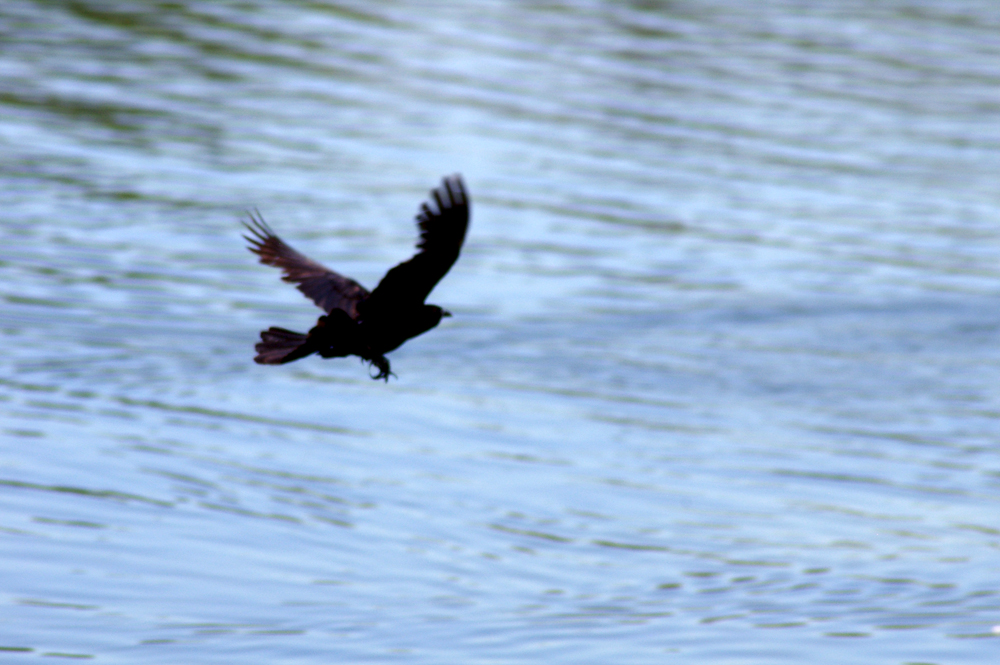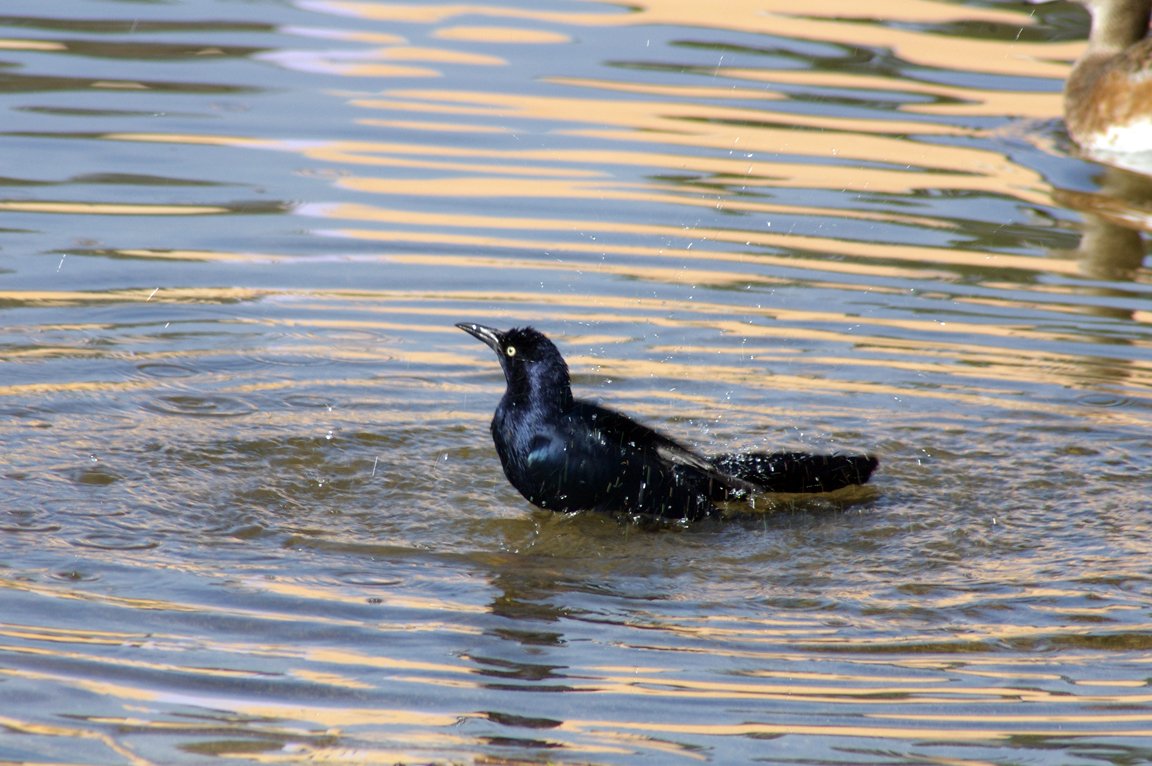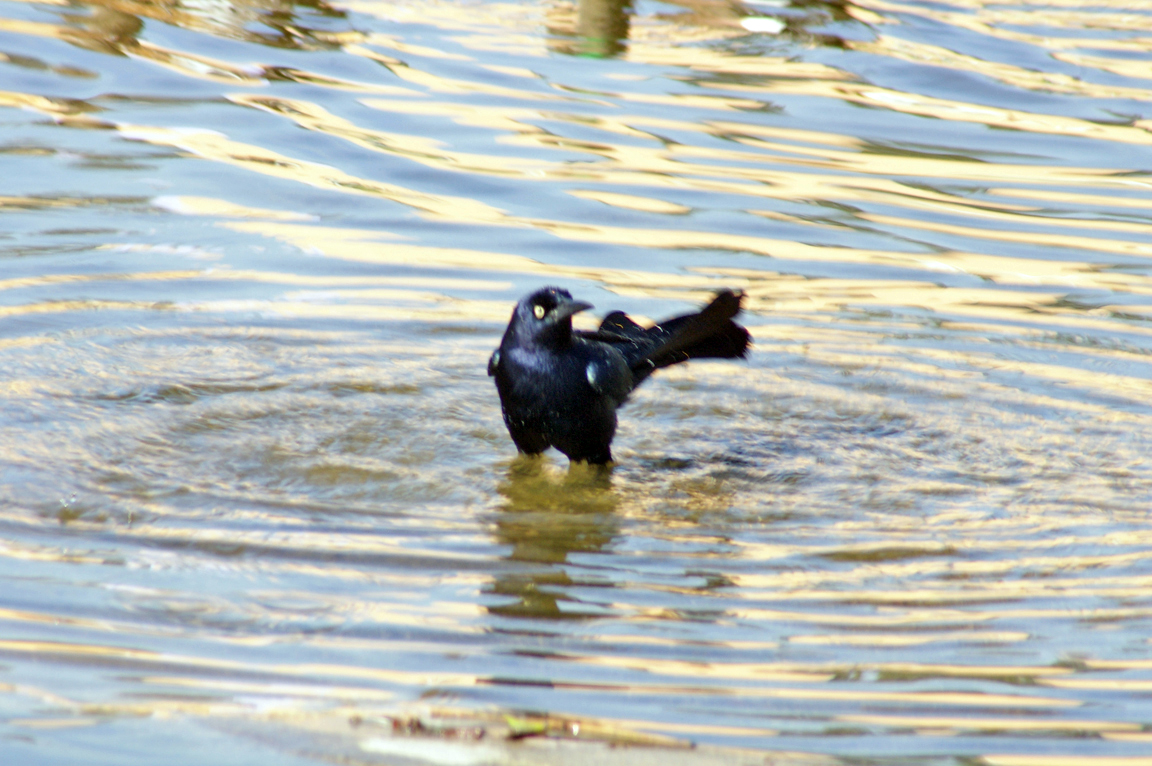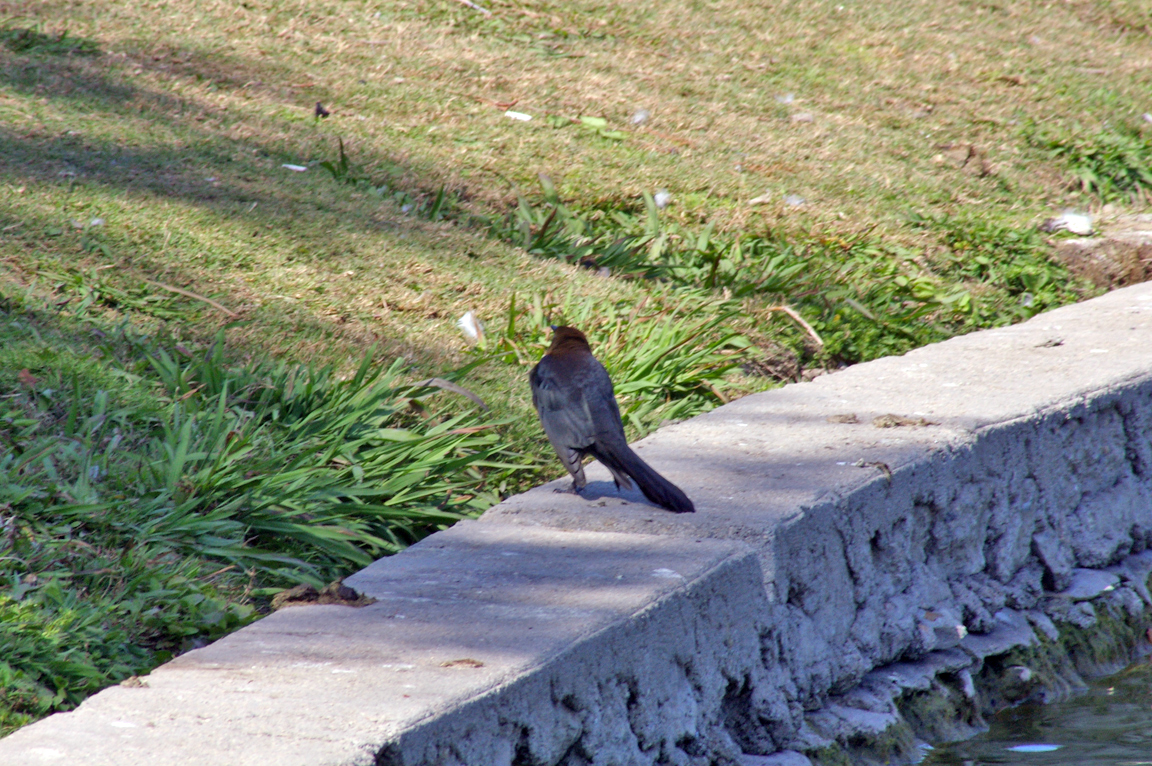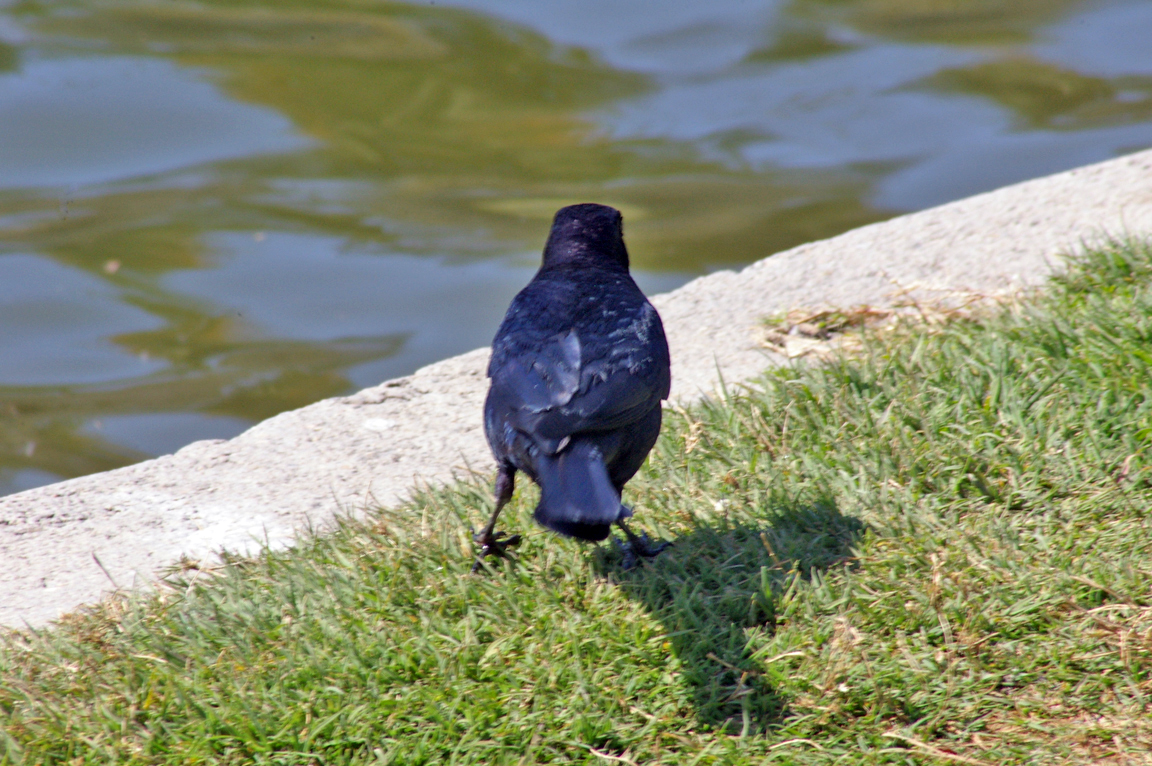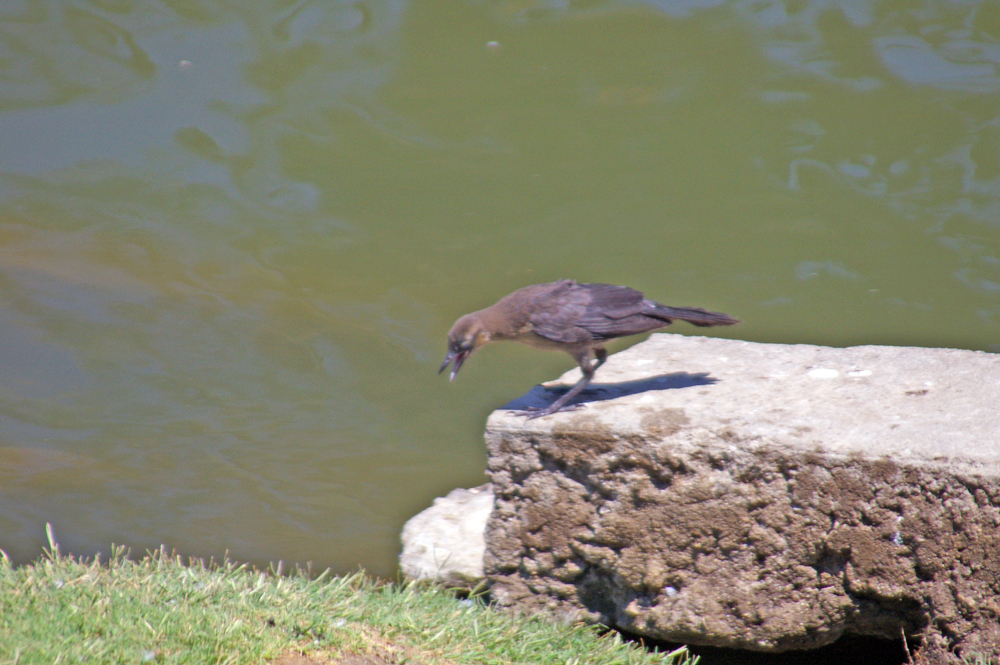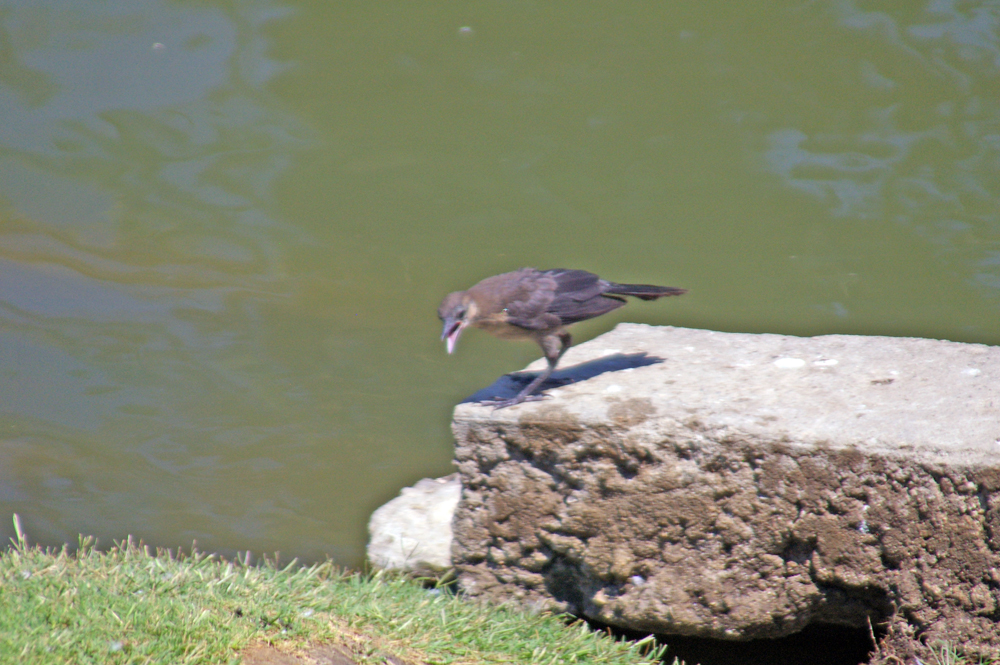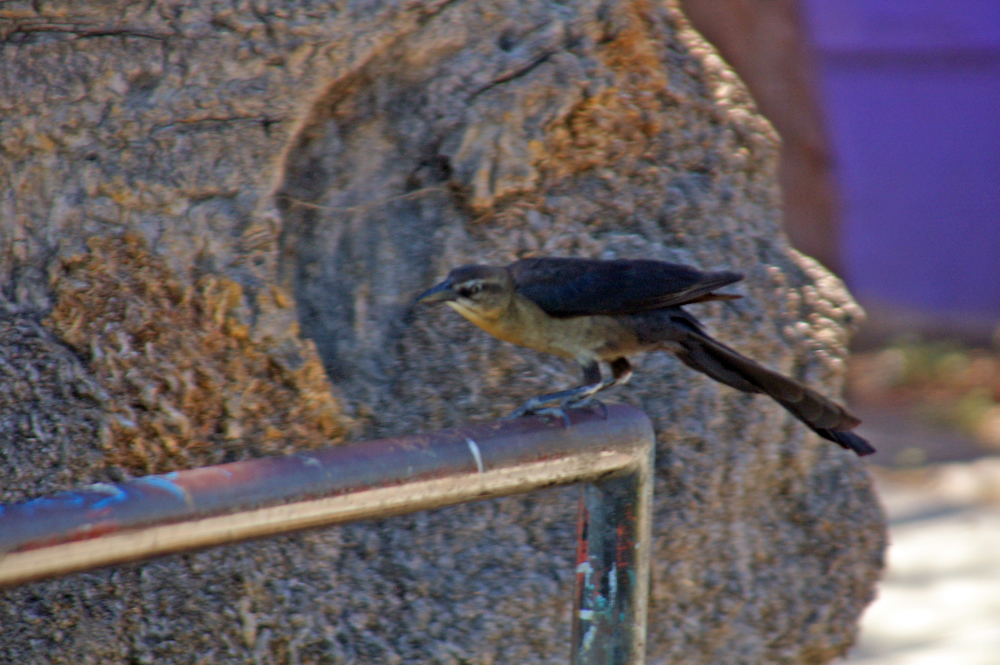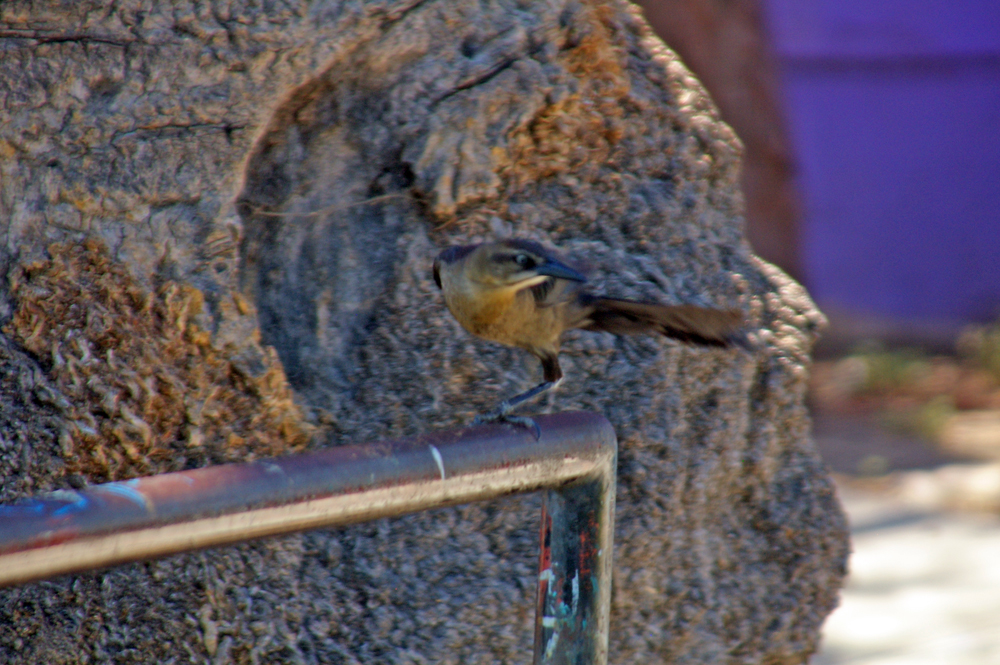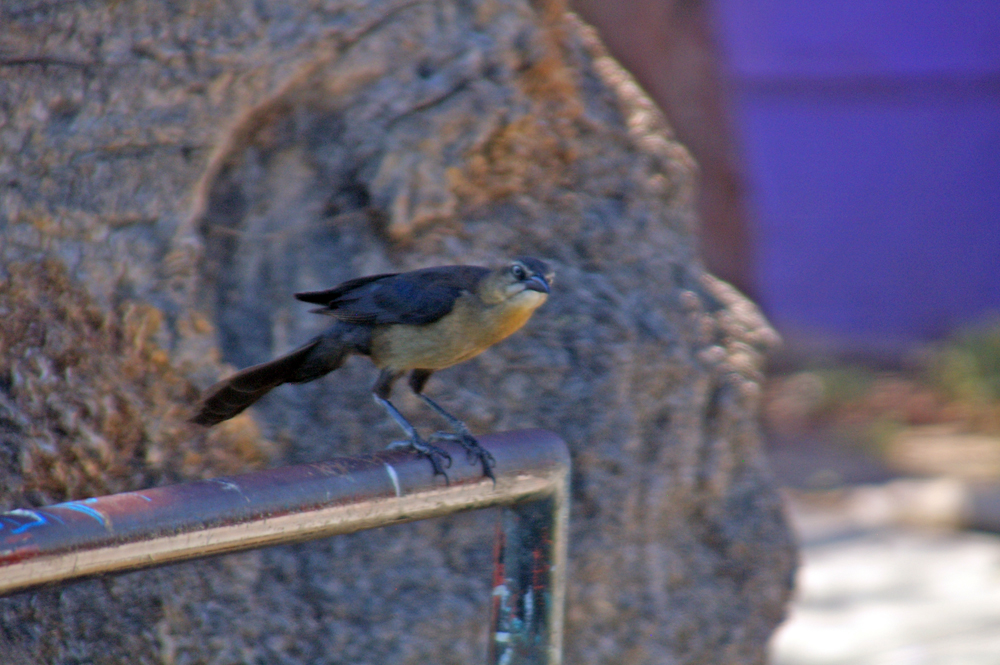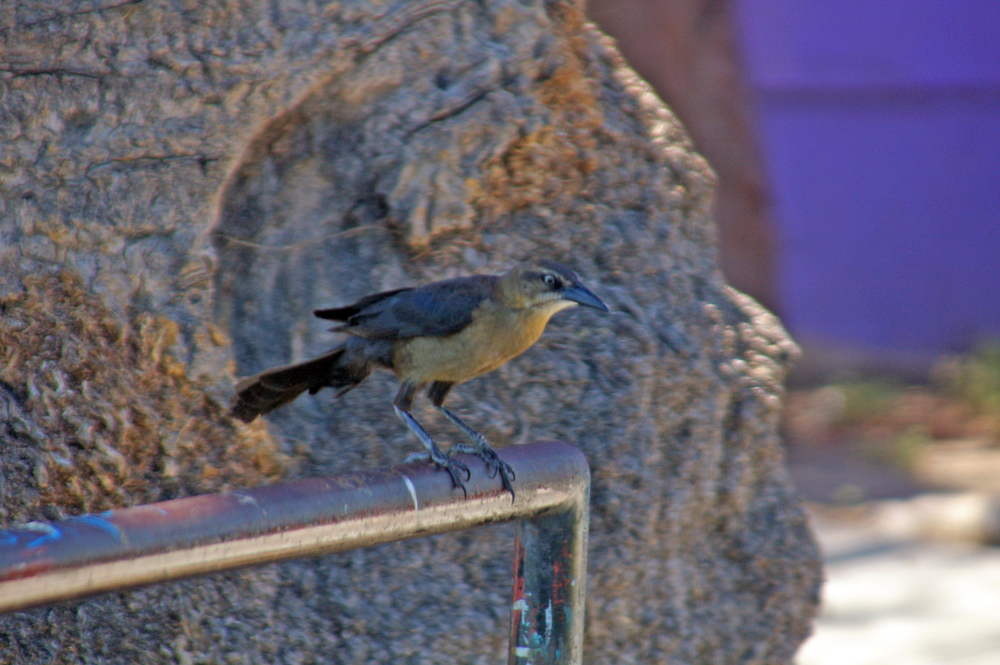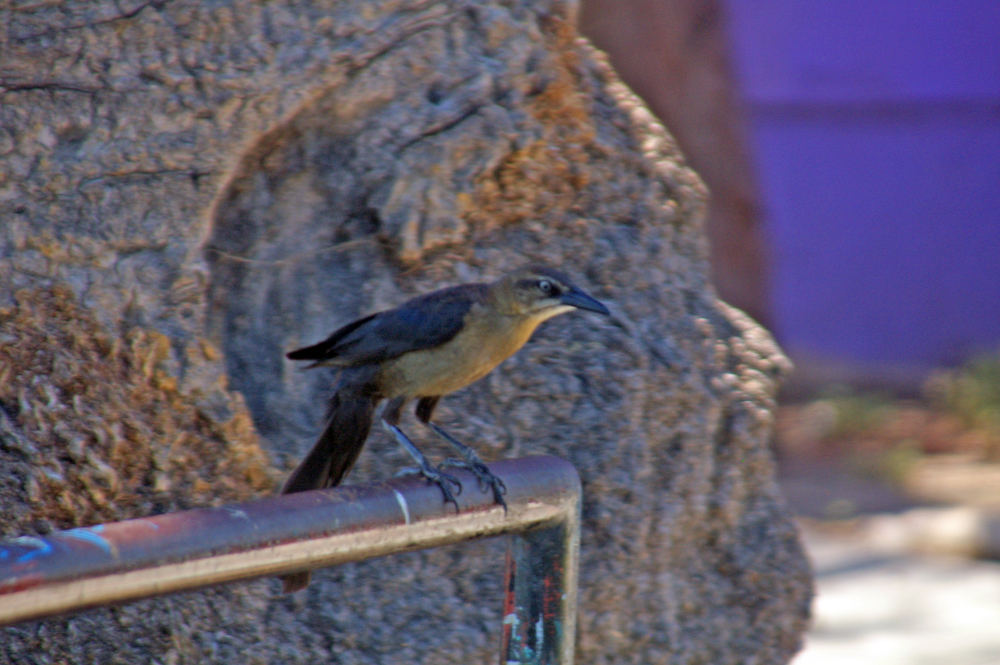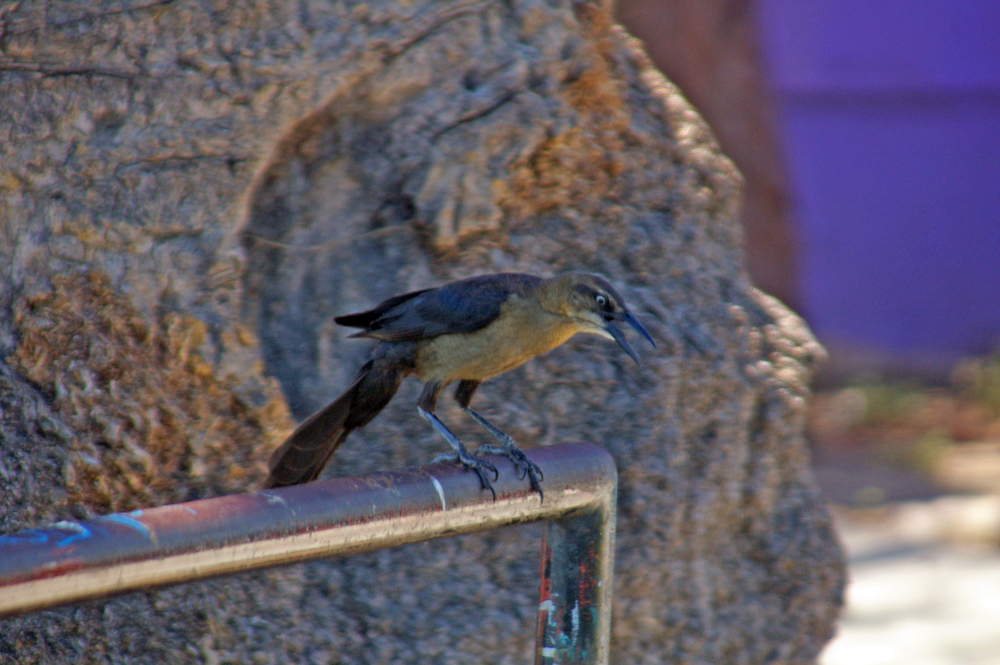|
|
|
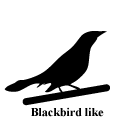 |
Great-tailed Grackle
|
| Quiscalus mexicanus | |
A large, noisy blackbird, the Great-tailed Grackle has been expanding its range in North America throughout the last century. A bird of open country with scattered trees and water, it took advantage of urbanization and irrigation to move northward from Mexico into much of western United States.
Interesting Information
-
Three different subspecies of Great-tailed Grackles have expanded into the United States from three separate areas of Mexico.
-
The Great-tailed and Boat-tailed grackles have at times been considered the same species. Current thinking is that they are closely related, but different species.
-
As it expands its range northward the Great-tailed Grackle tends to migrate out of the most northern areas. It quickly becomes a resident and stays through the winter.
-
Great-tailed Grackles roost together in large numbers outside of the breeding season. In Central America these large, noisy roosts frequently are found in the central plaza of small towns.
Description
Adult Description
-
Size: 38-46 cm (15-18 in)
-
Weight: 115-265 g (4.06-9.35 ounces)
-
Large blackbird.
-
Very long tail.
-
Male shiny black, female brown.
Sex Differences
Male iridescent black. Female dull brown and significantly smaller.
Male
Iridescent black with purplish-blue sheen. Yellow eyes. Long, graduated, keep-shaped tail. Moderately long, strong black legs. Flat-topped head profile.
Female
Dusky brown with darker wings and tail. Yellow eye. Buffy eyestripe and throat. Cinnamon buff to buffy brown on belly. Long tail only slightly keeled, if at all. Bill black. Legs black.
Immature
Juvenile is brown like female, with streaked underparts and dark eyes.
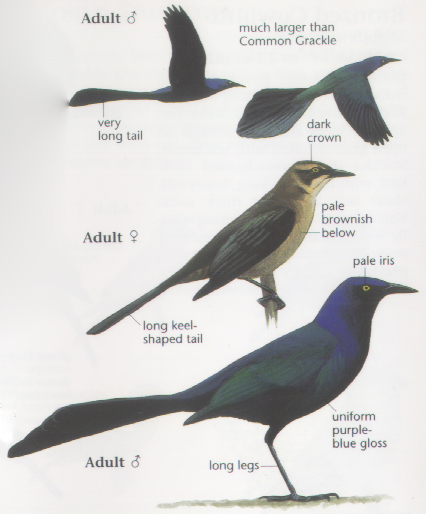
Photo taken from: The Sibley Field Guide by David Allen Sibley
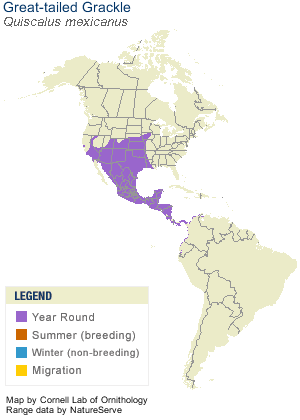
© 2003 Cornell Lab of Ornithology
|
Habitat |
|
Open areas with scattered trees and nearby water, including pastures, agricultural areas, mangroves, and urban and suburban areas. |
|
Behavior |
|
Forages in flocks with other blackbirds. Sexes may forage in separate flocks. Follows tractors to get exposed food. |
|
Food |
|
Insects, other invertebrates, tadpoles, lizards, small fish, and plant material. Some eggs and bird nestlings. |
Taxonomy
| Kingdom: | Animalia |
| Phylum: | Chordata |
| Subphylum: | Vertebrata |
| Class: | Aves |
| Order: | Passeriformes |
| Family: | Icteridae |
| Genus: | Quiscalus |
| Species: | Quiscalus mexicanus |
| Subspecies: | Quiscalus mexicanus graysoni |
| Quiscalus mexicanus loweryi | |
| Quiscalus mexicanus mexicanus | |
| Quiscalus mexicanus monsoni | |
| Quiscalus mexicanus nelsoni | |
| Quiscalus mexicanus obscurus | |
| Quiscalus mexicanus peruvianus | |
| Quiscalus mexicanus prosopidicola |
Similar Species |
|
|
Bird Sound |
|
Song a loud series of harsh rattles interspersed with whistling notes and other noises. |
|
Eggs look like this |
|
Photo taken from: ARCTOS Collaborative Collection Management Solution |
